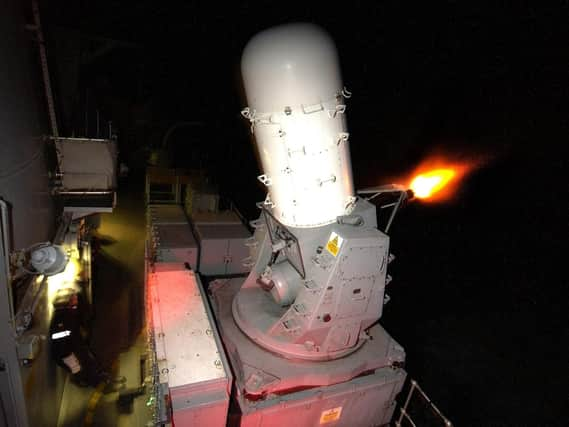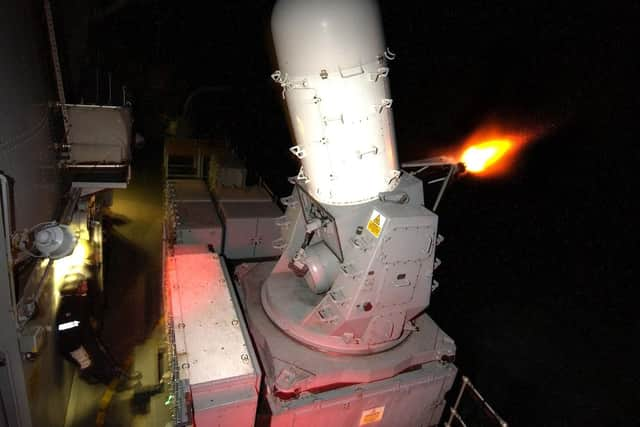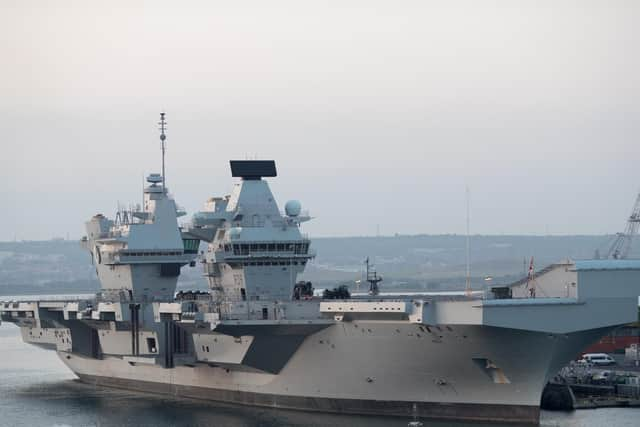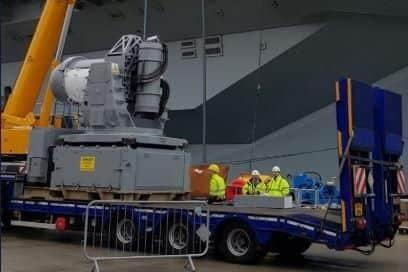HMS Queen Elizabeth: Calls made to fit more Phalanx anti-air guns to Royal Navy’s two new aircraft carriers to provide ‘extra insurance’ in war zones


Dr Julian Lewis, chairman of Britain’s defence select committee, quizzed the government over how many Phalanx close-in weapons would be fitted to both Queen Elizabeth-class carriers.
The powerful weapons system is designed to be the final line of defence for the supercarriers. They are able to spew out thousands of rounds a minute into the air to annihilate incoming anti-ship missiles or enemy jets.
Advertisement
Hide AdAdvertisement
Hide AdArmed forces minister Mark Lancaster has revealed that despite there being space for four of the fast-firing guns on each carrier, the likelihood was that only three of the weapons system would ever be fitted to the ships.


He said: ‘Three Phalanx close-in weapon systems will be fitted to each new aircraft carrier. Two are being fitted to HMS Queen Elizabeth during her current capability insertion period, with the third to be fitted towards the end of 2020. Three will be fitted to HMS Prince Of Wales in 2020.’
However, Dr Lewis was worried about how vulnerable the two supercarriers could be with only three of the weapons in place.
He said: ‘I agree that, if nothing goes wrong, the fitting of three will offer 360-degree coverage and protection, but, given that there is a fourth station on each aircraft carrier that could take a fourth system, and given that there are spare systems in storage following withdrawal from operational theatres, would it not be sensible to give some extra insurance by fitting a fourth system, so that if one is lost, there will still be total coverage and protection for these vital naval assets?’
Advertisement
Hide AdAdvertisement
Hide AdMr Lancaster said there was ‘scope’ to add a fourth Phalanx gun if needed, adding: ‘We have the ability to adjust that according to the threat. I should also remind the House [of Commons] that the carrier will be at the centre of a carrier group.


‘Protection for that carrier will consist of different layers of security provided by both the frigates and the destroyers, so it will not rely solely on the Phalanx system.’
Admiral Lord Alan West, the former head of the navy, said he was not worried about the situation.
‘I would not say I am overly concerned about it,’ the Labour peer told The News, adding he was ‘confident’ the warships would have adequate protection when she goes to sea, provided by carrier strike group surrounding it.
Advertisement
Hide AdAdvertisement
Hide AdPhalanx comes packed with kit, including a 20mm M-61A1 Gatling cannon, search and track radar, infrared camera and control stations for visual tracking.


The rapid-fire tech is fitted to all US Navy surface warships and features on the vessels of 20 other allied nation navies.
Each Phalanx is capable of emptying a 1,550-round magazine at 4,500 rounds-per-minute. The cannons have an effective range of 5.5 miles.